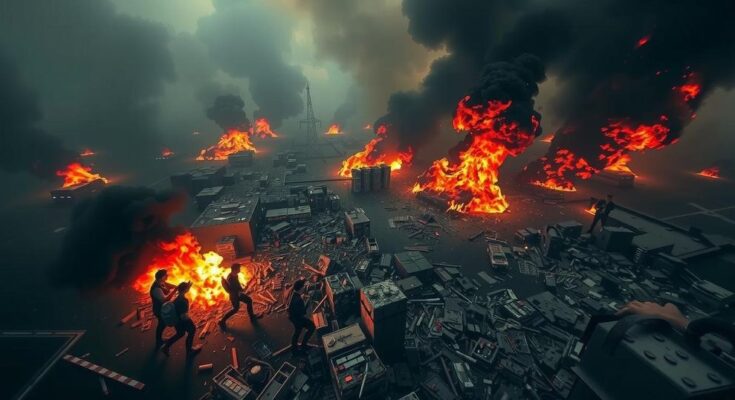Recent insurgent offensives have significantly altered the landscape of Syria’s civil war, notably impacting the control of Aleppo and nearby territories. The conflict involves key players such as Russian and Iranian forces backing the Assad regime, as well as Turkish-supported insurgents. The enduring presence of U.S.-backed Syrian Democratic Forces further complicates the power dynamics currently unfolding in Syria.
The Syrian civil war, ongoing since 2011, has recently drawn renewed international attention due to a dramatic offensive by opposition forces, resulting in the capture of significant territories including portions of Aleppo. This resurgence is largely attributed to the distraction and weakening of primary combatants, allowing rebel factions to reclaim ground. Russian and Syrian air forces have retaliated with widespread airstrikes in an attempt to stem the tide of insurgent progress.
The current battleground is defined by the complex interplay of multiple national interests, with various foreign powers maintaining military presences across the nation. The Syrian government, backed by Russia and Iran, has faced challenges as opportunity arose from their distracted adversaries. While Iranian support has faced limitations due to regional conflicts, Russia continues to prioritize its military engagements elsewhere.
On the opposing side, the insurgent group Hayat Tahrir al-Sham, with Turkish backing, has become a leading force in the rebellion against President Bashar Assad’s regime. The group has sought to redefine its image, distancing itself from its al-Qaida roots to bring a semblance of governance to areas under its control. Meanwhile, the Syrian Democratic Forces, supported by the United States, defend large territories in the east, primarily against the remnants of the Islamic State.
As of early December 2024, the situation in Syria remains fluid and precarious, with the potential for further escalations as both sides vie for control amidst this protracted and multifaceted conflict.
Syria’s civil war ignited initially as a reaction to President Bashar Assad’s governance in 2011, leading to a complex conflict involving numerous external powers and countless factions over the years. Various military interventions have altered the dynamics on the ground, with Russia, Iran, and the U.S. forming shifting alliances with different groups. The recent insurgent advances signify a notable change in momentum that disrupts the fragile state of peace achieved following the ceasefire agreements in 2020.
In summary, the Syrian civil war continues to evolve, shaped by aggressive military strategies, the shifting interests of foreign powers, and the adaptability of both government and insurgent forces. The recent territorial gains by opposition fighters highlight the ongoing volatility of the region, underscoring the challenges faced by the Syrian government in maintaining control amidst a complex web of alliances and enmities.
Original Source: mynorthwest.com




